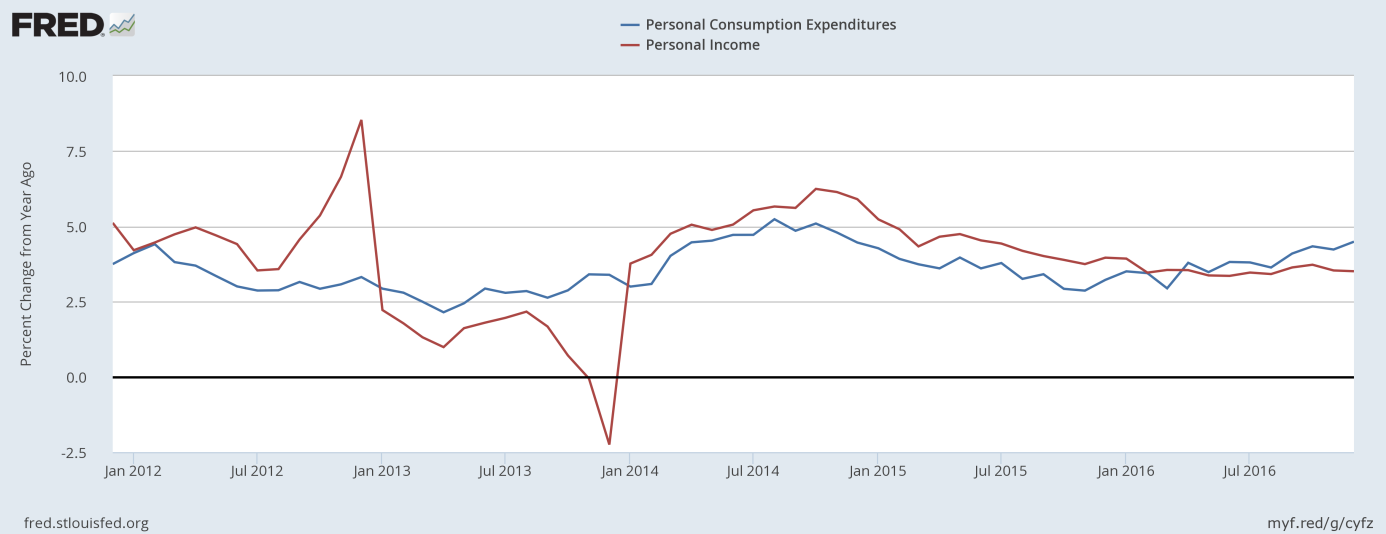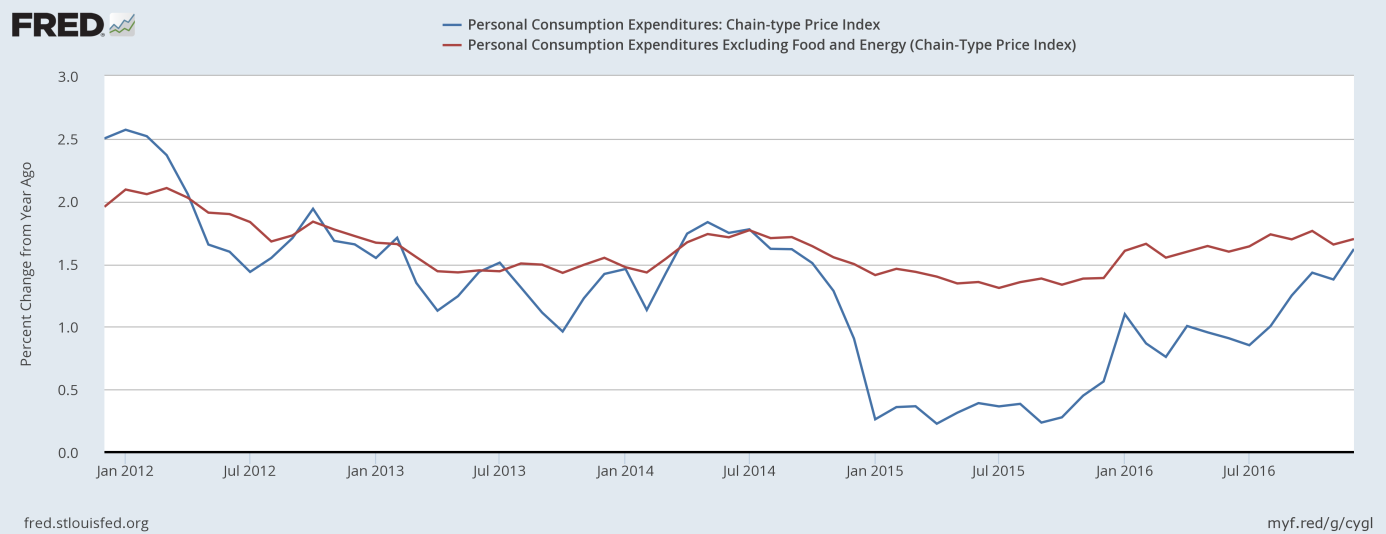U.S. consumer spending rose 0.5 percent in December, while the PCE Price Index for the whole 2016 jumped 1.6. What does it imply for the gold market?
Personal consumption expenditures increased 0.5 percent last month after a revised 0.2 percent jump in November. The move was in line with expectations and was driven by a 1.4 percent increase in purchases of durable goods. On an annual basis, consumer spending rose 4.5 percent. As one can see in the chart below, the pace of growth of consumer spending has been in an upward trend since March 2016. However, the GDP data showed that personal consumption expenditures rose at a 2.5 percent pace in the fourth quarter of 2016, down from 3.0 and 4.3 percent in the prior quarters.
Chart 1: Personal consumption expenditures (blue line) and personal income (red line) from 2011 to 2016 (as percent change from year ago).

The income side of the report was not so impressive, as personal income jumped 0.3 percent in December, following a revised 0.1 percent increase in previous month. The rise was slightly worse than expectations and did not keep pace with consumer spending (see the chart above). This is why Americans tapped their savings – the U.S. savings rate fell 0.2 percentage points to 5.4 percent.
The most important change covered by the report was, however, the uptick in the PCE price index. Inflation rose 0.16 percent, while its core version edged up 0.11 percent. For the whole 2016, the PCE price index jumped 1.62 percent, the fastest 12-month gain since September 2014, while the core index excluding food and energy prices rose 1.7 percent. Therefore, inflationary pressures strengthened significantly in the second part of 2016, as one can see in the chart below. Although the preferred Fed’s inflation gauge is still below the 2-percent target, prices are moving toward that level.
Chart 2: PCE Price Index (blue line) and core PCE Price Index (red line) as percent change from year ago, from 2011 to 2016.

The take-home message is that the December personal income and outlays report was rather positive. The rise in income was moderate, but consumer spending remained solid. Inflationary pressures increased further, which supports the camp of U.S. monetary policy hawks. This is bad news for the price of gold. Although nobody expects an interest rate hike at this week’s FOMC meeting, investors will analyze carefully the Fed’s statement. If it is hawkish, then gold prices should go south. On the contrary, if it is dovish, the price of gold should rise, especially given the current uncertainty about Trump’s immigration policy. Stay tuned!
If you enjoyed the above analysis, we invite you to check out our other services. We focus on fundamental analysis in our monthly Market Overview reports and we provide daily Gold & Silver Trading Alerts with clear buy and sell signals. If you’re not ready to subscribe yet and are not on our mailing list yet, we urge you to join our gold newsletter today. It’s free and if you don’t like it, you can easily unsubscribe.
Disclaimer: Please note that the aim of the above analysis is to discuss the likely long-term impact of the featured phenomenon on the price of gold and this analysis does not indicate (nor does it aim to do so) whether gold is likely to move higher or lower in the short- or medium term. In order to determine the latter, many additional factors need to be considered (i.e. sentiment, chart patterns, cycles, indicators, ratios, self-similar patterns and more) and we are taking them into account (and discussing the short- and medium-term outlook) in our trading alerts.
Thank you.
Arkadiusz Sieron
Sunshine Profits‘ Gold News Monitor and Market Overview Editor
Gold News Monitor
Gold Trading Alerts
Gold Market Overview


